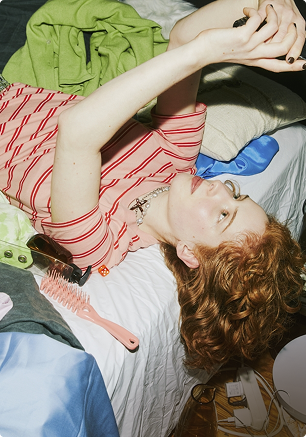
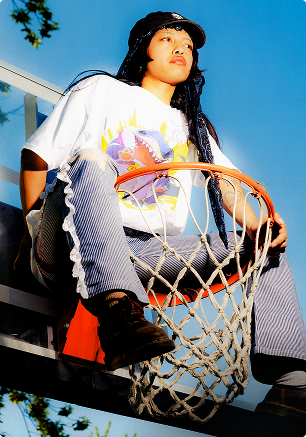
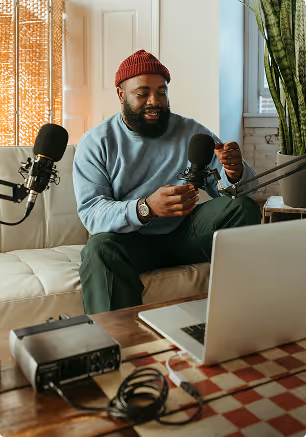

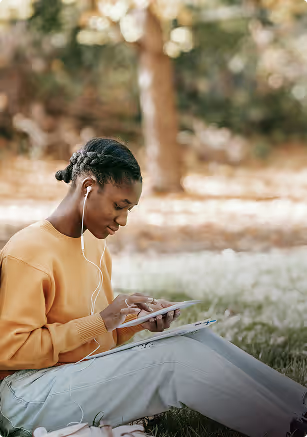
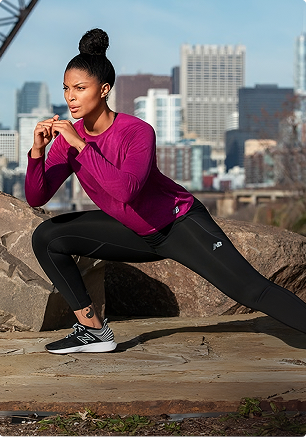

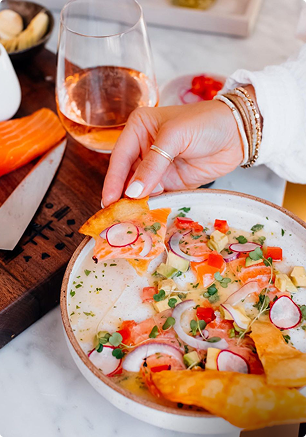
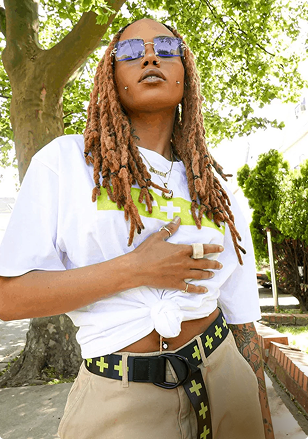

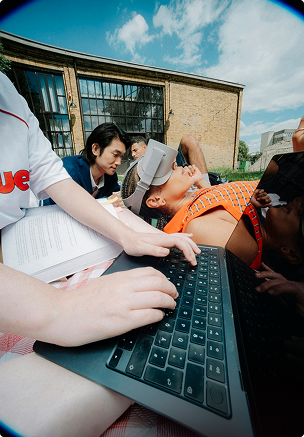
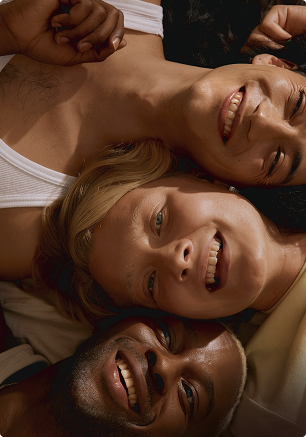
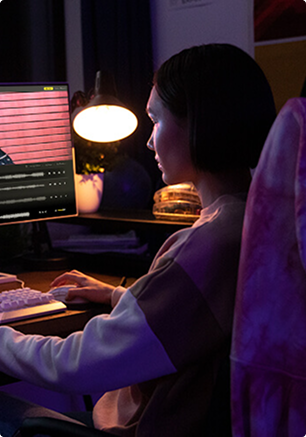
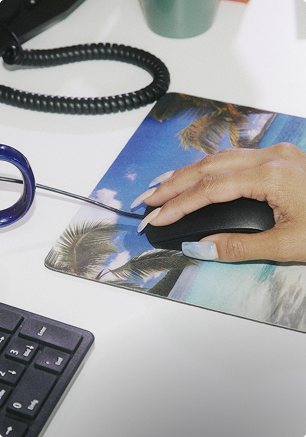
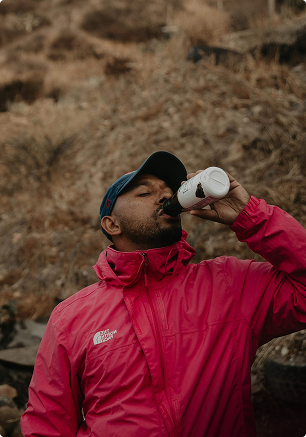
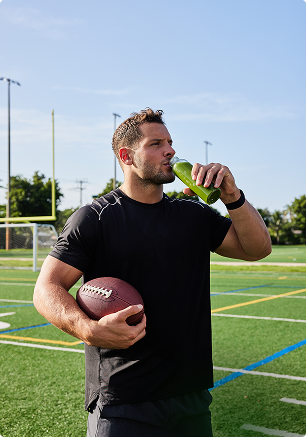
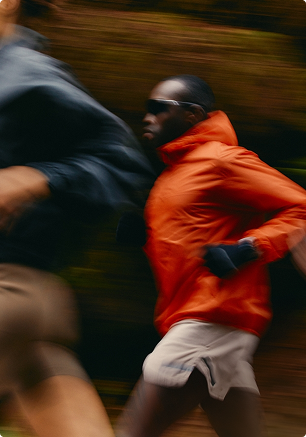


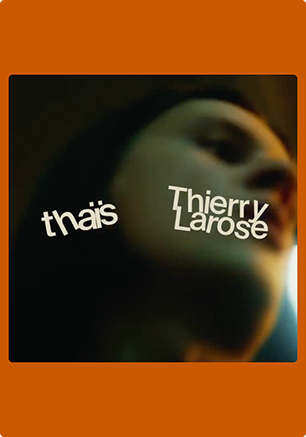



According to Nielsen’s 2024 Annual Marketing Report, only 38% of global marketers measure ROI across all channels. This shows us how fragmented creative and media workflows still are in today’s digital media.
This fragmentation reduces brand awareness and limits user engagement, from social media ads to PPC.
When media and creative teams operate in silos, the result is predictable: wasted ad spend across advertising campaigns and performance marketing efforts, creative fatigue, and falling ROAS.
And with Kantar and Meta finding that only 36% of campaigns effectively connect brand and product storytelling, this shows how often alignment breaks down.
To scale and stay data-informed, teams need unified workflows that integrate creative, data, and media planning.
This guide breaks down actionable strategies for aligning media and creative to elevate ROAS; and shares how your ad campaigns must build emotional connections and use a data-driven approach to effectively reach audiences.
P.S. For a deeper look at global best practices, check out our article on “Trends in integrated marketing for global companies.”
Here are some key takeaways for optimizing ROAS with media-creative handshakes:
In marketing, a “handshake” is when media strategy and creative production teams align, sharing audience insights and merging goals around targeting and storytelling.
For years, brands chased media efficiency, but Google’s Effectiveness Equation shows true impact comes from creative quality in both digital marketing and programmatic advertising contexts. In fact, this drives nearly 50% of campaign performance, which is more than reach or frequency can do by themselves.
When media and creative align, that impact compounds. As a result, your influencer-driven ad campaigns or other social media ads drive more brand awareness.
Creative fatigue is squeezing margins in performance marketing, leading to rising CPMs. In fact, social media ads CPMs are increasing by ~28% year-over-year as online targeting becomes more competitive.
However, enterprise marketers are tackling these challenges head-on. That’s why the top advertising agencies for enterprise brands are rethinking their integrated workflows.
These brands re-align media and creative workflows, so paid search, retail media, and social media ads campaigns share KPIs. This leads to faster testing across channels, reduces waste, and increases ROAS as a result.
That’s because integrating retail media and site display strategies with paid search ensures stronger synergy across advertising campaigns. This data-driven approach leads to consistency, memorability, and trust.
Besides, it’s easier to track conversions and tie creative storytelling to measurable ROAS.
Systematically increasing ROAS requires using customer data, consumer research, and media habits insights to inform your digital media and performance marketing strategies. Here’s what we advise:
To improve ROAS, merge your first-party loyalty data with consumer research as part of your campaign strategy to decode shifting media habits.
It also helps you comply with changing data privacy laws and sharpen online targeting.
The best digital marketing agencies for large companies are already using this tactic to sharpen their creative precision because they’re better able to personalize ads. Besides, this kind of campaign strategy lets you track conversions more precisely because it connects real customer behavior with ad exposure. Basically, you can attribute results to actual purchases, segment audiences by lifetime value, and optimize spend toward the channels that drive measurable sales.
And the stats prove it works: brands using contextual and loyalty-driven data have seen 29% higher ad recall than cookie-based campaigns.
Here’s how to do it:
You’ll need to use Google Analytics 4 and Nielsen IQ modelling to link CRM, social media ads, and purchase data for conversion lift.
Then, sync dashboards weekly to spot high-value segments early, tailor digital media messaging for localized in-store digital presence, update creatives fast, and optimize paid search, social, and retail-media ROI.
Integrated creative-media briefs ensure audience segmentation and campaign goals stay aligned. This alignment forms the basis for ad campaigns that connect user engagement metrics with your other goals.
You’ll see this approach modeled by the top programmatic advertising agencies for large brands, who build creative briefs directly from campaign data.
Plus, Google reports creative assets drive nearly 49% of total ad impact on sales. If your media and creative teams co-develop advertising campaigns using shared customer data, you’re likely to get even better results.
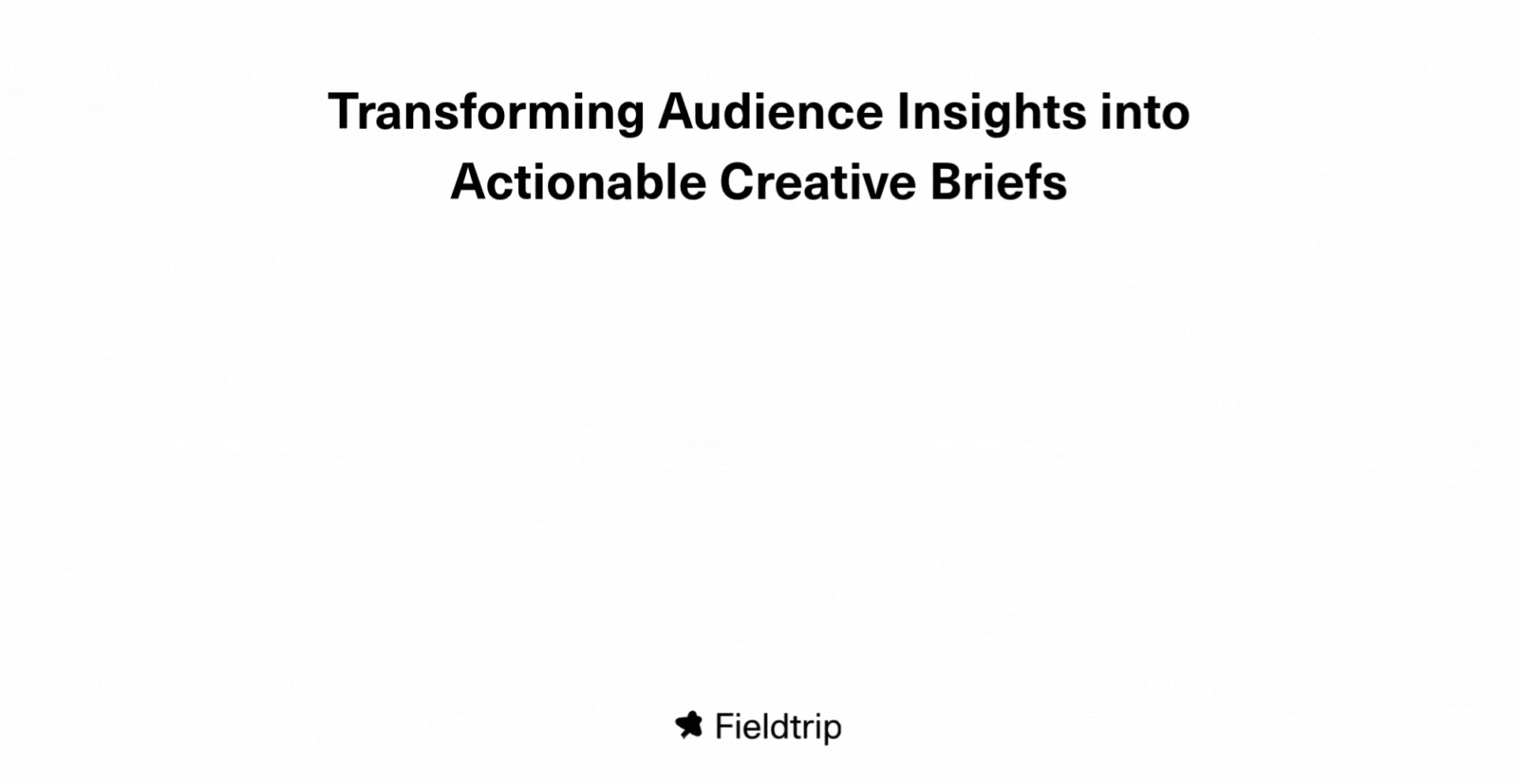
Marketers in the wellness space or lifestyle brands, for example, often outperform generic campaigns when they design content that mirrors their audience’s authentic motivations.
Similarly, a performance-marketing team launching a hybrid car might sync paid search keywords with site display visuals to maintain consistent messaging, reinforce relevance, and lower CPA.
Insider tip: Involve performance-marketing leads early; analyzing keyword and bid data will accelerate your creative testing and optimization.
To keep collaboration fluid, connect creative briefs to live dashboards in tools like Airtable or Monday.com.
Creative teams turn customer data and performance-marketing insights into high-impact digital media stories. The resulting advertising campaigns foster emotional connections, drive user engagement, and consistently elevate ROAS.
Here’s how.
Design eye-catching advertisements that convert by juxtaposing imagery, using clear calls-to-action, and highlighting key product features for each audience segment, for example, Halloween costumes or photo shoot ideas that reflect trending TikTok challenge aesthetics.
We did this for our client Hurom, leading to a 3X ROAS increase with ads like this:
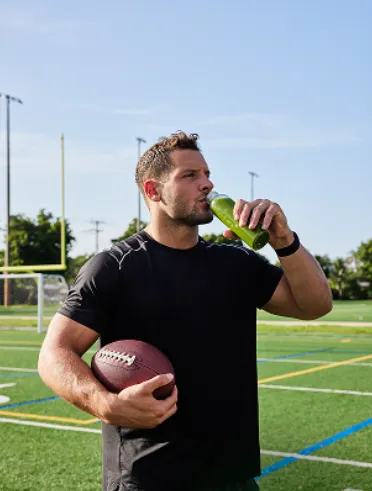
Insider tip: An ad campaign with emotional connections performs better than purely transactional content. That’s why, for Hurom, a famous brand of cold-press juicers, we connected Nick Bosa’s ads for Hurom with his football injury and recovery journey. Of course, Nick’s recovery was powered by cold-press juices, and his story was very relatable.
When launching eye-catching ads, use the Google Ads Asset Library and Meta Creative Hub for rapid iteration. And remember to include “before” and “after” visuals with strong CTAs to stop users from scrolling and spark conversions online.
Brands refining creative elements with live media data consistently improve ROAS.
Creative updates based on performance signals can raise conversions, as you’ll be making data-driven decisions based on engagement metrics and user behavior. Such optimization increases brand awareness and leads to measurable user engagement.
Both are great for conversions.
To identify which visuals and messages drive engagement across your online-targeting channels, use statistical analysis platforms like Google Ads Data Hub or Nielsen ONE.
Insider tip: Refresh your ad copy every two weeks based on audience feedback loops to combat creative fatigue and maintain your performance.
In digital marketing, linking creative optimization directly to advertising campaigns ensures budget flows to high-performing variants early. It’s a core principle smart marketers follow for effective, data-driven digital advertising.
Performance marketers must test innovative ad formats to stay ahead of creative fatigue and improve ROAS.
Immersive experiences, like virtual reality (VR), AR (augmented reality) filters, and experiential marketing installations, increase engagement beyond standard social media formats, proving the ROI of creative innovation.
Some of the best international marketing agencies are already experimenting with shoppable media and immersive storytelling to increase engagement.
Case studies confirm this impact: Pet brand Gunner Kennels used AR for virtual 3D placement of kennels, driving a 40% increase in order conversion.
Aligning these innovations with your brand story and placing them via programmatic advertising strengthens measurable conversions.
Media teams increase ROAS by using data and AI to target audiences, choosing effective channels, and adjusting budgets in real time. We’ll review all these below:
Brands using AI for segmentation achieve 15% higher conversion rates and 25% higher campaign performance.
How, you ask?
Well, AI-powered targeting sharpens performance marketing by improving audience segmentation through first-party loyalty data, statistical modeling, and predictive modeling tools to identify and prioritize high-value audience segments.

Insider tip: If you’re running an influencer campaign, create high-impact influencer lookalike segments using loyalty data to efficiently scale reach. This works especially well for high-impact influencer segments in social media campaigns.
In paid search, Google’s Smart Bidding reallocates spend toward high-intent audiences because you can automatically adjust bids based on real-time signals like device, location, and conversion likelihood.
For broader omnichannel campaigns, we recommend using tools like The Trade Desk, which apply similar AI-driven optimization across display, video, and connected TV to maintain precision at scale.
Balancing your paid search, social media, and retail media investments is crucial for sustainable ROAS growth.
Not convinced?
A coordinated cross-channel strategy, such as one combining programmatic and social formats, drives 24% higher conversion rates compared to running channels in silos.
We did it too, for clients like Miro.
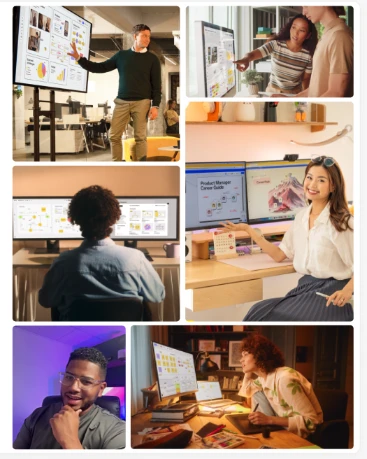
We used influencers on YouTube, LinkedIn, Instagram and TikTok, which led to over 20 million impressions in just 8 months (and counting).
To measure channel contribution and prevent overexposure, use Nielsen’s Marketing Mix Modeling and Google Ads attribution insight for clarity.
Side note: Even offline, brands working with the top out-of-home (OOH) advertising agencies for enterprises are finding creative ways to connect real-world visibility with digital conversions, proving that integration, not isolation, drives performance.
Optimizing ROAS in performance marketing means continuously reallocating budget toward your top-performing creatives.
This creative-led approach directly increases returns: McKinsey found that optimizing the creative mix across advertising campaigns results in a 14% increase in sales.
Programmatic advertising automates these budget shifts, using statistical modeling to move spend from poor-performing placements to high-yield channels. In recent years, much of that optimized investment has flowed into online video (great for its engagement and viewability) and retail media networks, which combine rich first-party data with measurable purchase intent.

To forecast which audiences and creatives deliver the strongest returns, use precise customer data and predictive tools (such as those in Google Ads) to optimize your budget.
The point is to see which of your ad campaigns generate emotional connections. These ones are likely to get you more ROI, too.
Next, we’ll explore how media and creative, through integrated campaigns in paid search, social, and retail media, can drive unified ROAS growth across all campaigns. Follow the steps below:
Combining paid search and site display strengthens message recall and increases conversion intent. It also builds brand awareness by maintaining a consistent tone on your social media ads.
For example, when display (or video) ads are used to reinforce messaging from a paid search campaign, customers are up to 70% more likely to purchase.
This integration also captures high-intent shoppers, increasing the effectiveness of every dollar spent.
Insider tip: Keep your ad copy and tone consistent across search and display to strengthen brand memory and reduce creative fatigue. To correlate your keyword performance with creative CTRs, use Looker Studio or Adobe Experience Cloud.
Social media campaigns that use audience segmentation and platform-native storytelling drive stronger ROAS, thanks to higher engagement rates, increased personalization, and efficient ad spend.
But back to platform-native storytelling: this one’s great to have in your content mix.
ComScore found that combining professional advertising campaigns and user-generated content results in a 28% increase in brand engagement, while UGC-based ads convert 4x more effectively than standard branded content.
Insider tip: Track key metrics like CTR, engagement rate, and assisted conversions to gauge performance and refine future content.
For example, our client Prose’s micro-influencer strategy featured 20+ creators producing 100+ social media assets monthly. This delivered a 45% year-over-year increase in ROAS and a 20% drop in acquisition cost.
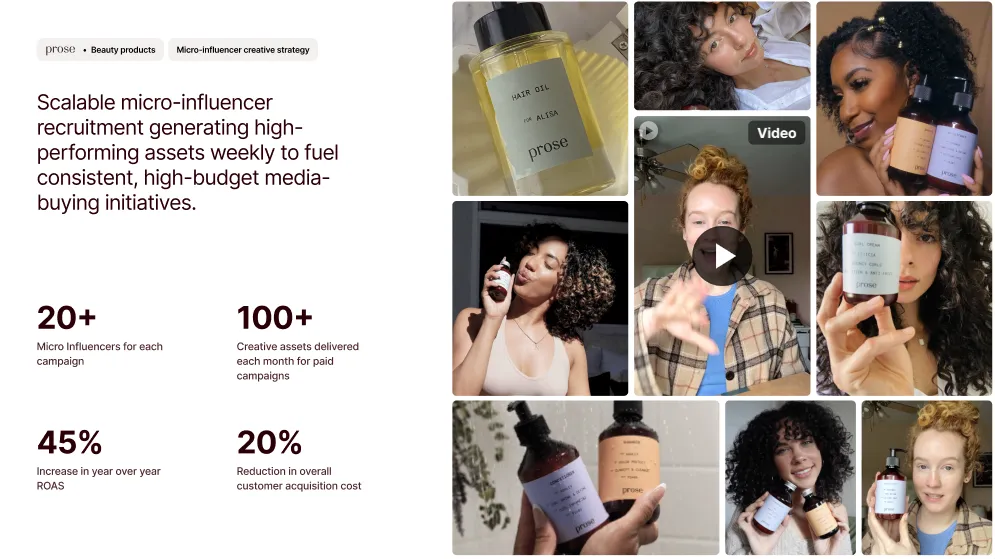
Retail media refers to advertising that appears on a retailer’s digital properties. It can be anything from on-site sponsored product listings and display ads to off-site campaigns powered by the retailer’s shopper data.
This is where you meet consumers at the point of purchase, using first-party data to reach people with proven buying intent.
By combining creative storytelling with these data-rich retail networks, marketers can turn brand narratives into measurable sales.
Insider tip: Match the creative tone to physical environments, like signage or showroom displays, for seamless online-to-offline storytelling.
For instance, localized product stories or context-aware visuals on platforms like Amazon, Walmart Connect, or Instacart outperform generic campaigns, because they appear when shoppers are already in a buying mindset.
And with U.S. retail media ad spend expected to reach nearly $98 billion by 2028, it’s clear this channel has become a core pillar of digital performance marketing.
How to make it work: Fuse consumer research with retail data to tailor messaging by region, purchase behavior, and store type. Then test variations of your creative against key retail metrics such as share of shelf, basket size, and incremental ROAS. The more your storytelling mirrors shopper intent, the stronger the conversion lift you’ll see.
Next, we’ll look at measuring ROAS lift by linking creative metrics, performance marketing analytics, and customer data in unified dashboards across digital advertising campaigns.
Setting strong ROAS benchmarks starts with clean customer data and consistent attribution.
Also, establish baseline ROAS targets by channel, based on past performance and cost structures.
Insider tip: Refresh these benchmarks quarterly, adjusting for CPM inflation, creative fatigue, and seasonal shifts to sustain profitability.
Use Nielsen Marketing Mix Modeling (MMM) and multi-touch attribution to understand each channel’s incremental impact and avoid over-investing where returns diminish.
P.S.. For deeper insights, read our article on Multi-Touch Attribution vs. Marketing Mix Modeling to measure your campaign performance correctly.
Unified dashboards align your creative and media teams around shared performance metrics derived from cross-platform user engagement data.
These visual data tools are great; using them can result in a 30% improvement in decision-making speed and accuracy. Plus, using platforms like Looker Studio or Tableau will help you centralize reporting across your performance-marketing workflows.
To see how your spend correlates with metrics like CTRs, conversions, or brand awareness trends, integrate site analytics, paid search data, and CRM insights such as customer lifetime value, purchase frequency, or churn risk. This gives you a full-funnel view, connecting ad engagement to real business outcomes.
Insider tip: Standardize tagging and naming conventions across your advertising campaigns to prevent attribution errors.
Top brands continuously monitor how each creative variant performs and adjust accordingly.
This is crucial because a Meta study found that iterative creative testing can increase conversion rates by up to 29%.
Insider tip: Improving your ad creatives should be an always-on process. So, schedule regular reviews of creative performance. Continuously train your predictive models with fresh campaign data to make each iteration more effective.
Use AI-driven tools to predict which creative elements, visuals, copy, or formats will perform best before launch.
Then, scale winning assets, pause underperformers, and apply these learnings to your new creative batches to improve campaign strategy and maintain brand awareness growth.
Effective performance marketing relies on a few key ingredients, from creative collaboration to continuous learning. Here’s how to optimize your workflow.
Small, integrated media-creative teams accelerate optimization and drive ROAS growth.
Brands using integrated feedback loops can also make faster campaign adjustments if they use real-time dashboards and alerts.
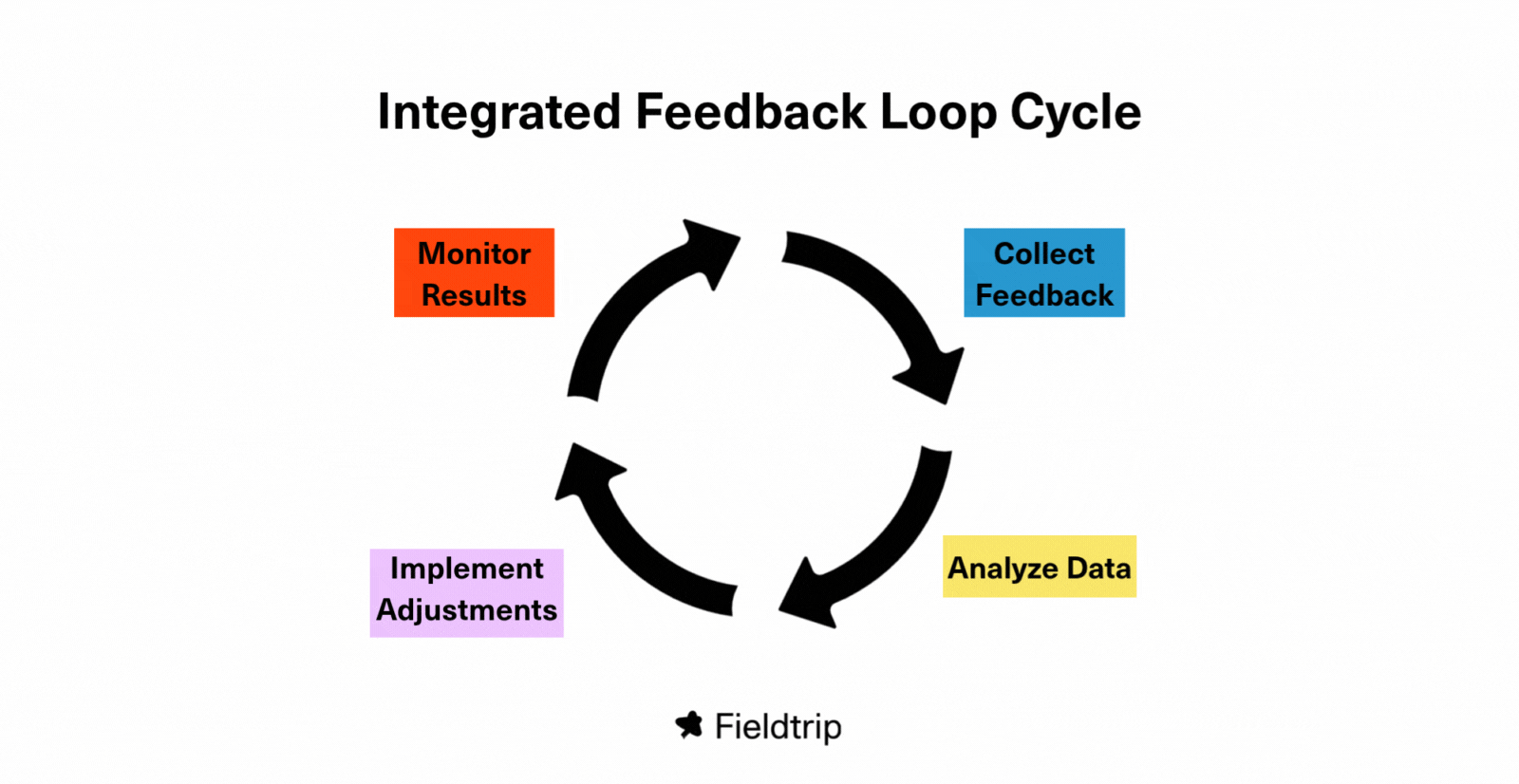
To get the most out of your media-creative team, pair strategists and designers to review live customer data together. That way, they can detect user engagement patterns early and adapt ad campaigns accordingly.
Insider tip: Keep your teams small (four to six members) for agility. And use workflow optimization tools to streamline approvals, data visualization, and testing.
That brings us to the next point:
“A man is only as good as his tools,” and the right workflow tools will make your media-creative alignment scalable.
For example, platforms like Miro, Airtable or Monday.com help you centralize briefs, feedback, and analytics.
And it pays off.
Your team can cut production time by up to 77% using unified dashboards and workflow automation. These tools increase their productivity and allow them to make faster, data-driven decisions that improve brand awareness and maximize ROAS.
Insider tip: Connect your marketing data automation platform to Slack or Teams so performance summaries of your creatives post automatically. This keeps your team updated in real time and lets them spot optimization opportunities without waiting for manual reports.
Having a strong testing culture keeps your creative and media teams innovative, accountable, and ahead of market shifts.
Studies support this: Research from Quadmark and Deloitte shows that organizations with strong learning cultures are over 90% more likely to innovate.
So, embed creative testing into every advertising campaign, across digital media, programmatic advertising, and paid social.
And use statistical modelling to validate creative outcomes, linking digital media experimentation to programmatic advertising efficiency. This will ensure learning loops stay short and actionable.
Insider tip: Keep your teams engaged by making things more fun; celebrate learning, not just winning ads. Host monthly “Creative Lab” sessions where your teams share A/B results, discuss audience feedback, and brainstorm next-round hypotheses to fuel ongoing ROAS growth.
Integrated media-creative partnerships outperform siloed workflows.
When media and creative teams collaborate from the start, campaigns become more consistent, data flows both ways, and optimization happens in real time. All this leads to higher ROAS.
Fieldtrip specializes in building these partnerships.
We bring strategy, storytelling, and media execution under one framework, ensuring every impression serves both performance and brand-building goals. The result: stronger creative, smarter spend, and measurable growth across channels.
Partner with Fieldtrip to turn every campaign into a high-impact, ROAS-driven handshake.
1. What are media and creative handshakes in marketing?
Media–creative handshakes describe the alignment between media strategy and creative execution. This collaboration ensures campaigns are cohesive, data-informed, and built to convert. In performance marketing, connecting targeting data with creative storytelling helps brands engage audiences more effectively across channels.
2. Why are media and creative handshakes important for increasing advertising effectiveness?
When media and creative teams work together, advertising becomes more relevant and efficient. Programmatic and AI-powered optimization tools can further align creative messaging with audience intent, reducing wasted spend and improving ad resonance.
3. Which strategies for media and creative handshakes lead to better ROAS?
Top strategies include aligning KPIs across teams, leveraging audience segmentation, and running ongoing creative tests. Combining paid search insights with retail media placements strengthens the customer journey and reinforces brand recall.
4. How can brands measure the impact of media and creative handshakes on campaign ROAS?
Use a mix of marketing-mix modelling (MMM), multi-touch attribution (MTA), and unified performance dashboards. When teams share real customer data and track common KPIs, it becomes easier to see which creative elements and media channels drive the highest return.